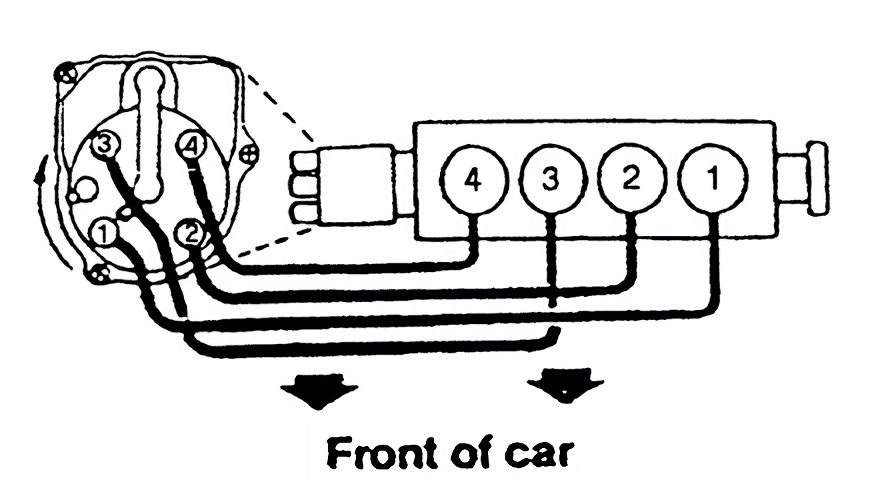The firing order for your 2011 Toyota Camry is 1-3-4-2. This means that the spark plugs ignite in that sequence, starting from the front of the engine. It’s important to follow this order to keep your engine running smoothly and use fuel efficiently.

If you keep researching, you’ll find out more about how different cars have different firing orders and how to tell if your engine isn’t firing correctly.
Quick Navigation
Key Takeaways
- The 2011 Toyota Camry uses a firing order of 1-3-4-2 to keep the engine running smoothly.
- This means that the front cylinder, marked as ‘1’, fires first, then the 3rd, 4th, and 2nd cylinders follow in that order.
- If the car shudders when it’s idling, uses more fuel than usual, or doesn’t accelerate as well as it should, the firing order might be wrong.
- Keeping up with regular checks of the ignition system, including the spark plugs and wires, is important for keeping the firing order correct.
- Other cars like the Honda CR-V, Hyundai Sonata, and Nissan Altima also use this 1-3-4-2 firing order.
Understanding 2011 Camry Firing Order

The 2011 Camry’s firing order is like a special set of instructions for the engine. It follows a 1-3-4-2 pattern. This isn’t just a random order, it’s made to help the engine work best.
The order makes sure each engine cylinder fires at just the right moment. This helps keep the engine balanced and cuts down on shaking. The ‘1’ stands for the cylinder at the front of the engine, near the cover. After that, the sparks go to cylinders 3, 4, and 2 in that order.
This isn’t only for the Camry. Other cars like the Honda CR-V, Nissan Altima, and Hyundai Sonata use the same order. Knowing this can help keep your Camry’s engine running well.
Symptoms of Engine Misfiring
When your Camry’s engine begins to misfire, you’ll notice a few strange signs that there’s a problem with the way the engine is firing. You might feel the car shake when it’s idling, see a big drop in how far you can go on a tank of gas, or feel like the car isn’t as powerful when you’re trying to speed up. These signs often mean there’s something wrong with the spark plugs, which might need some fixing.
It’s important to regularly take care of your car’s ignition system to stop misfires from happening. This includes keeping an eye on your spark plugs for any wear and tear, and changing them out if needed. The ignition coils and wires also need to be in good shape. If your car keeps misfiring, it’s a good idea to get a professional mechanic to take a look and maybe do a tune-up. Remember, taking good care of your Camry is the best way to keep it running well.
Similar Firing Orders in Other Models
Interestingly, many other car models have the same firing order as your 2011 Toyota Camry, which is 1-3-4-2. This can be interesting when you compare it with models like the Honda CR V and Hyundai Sonata.
Just like your Camry, the Honda CR V also uses the 1-3-4-2 firing order. This shows they use a similar design for their engines to perform efficiently. The Hyundai Sonata also uses this same firing order, showing they’ve similar engine designs.
- Honda CR-V: Uses 1-3-4-2 firing order
- Hyundai Sonata: Uses 1-3-4-2 firing order
- Nissan Altima: Uses 1-3-4-2 firing order
- 2011 Toyota Camry: Uses 1-3-4-2 firing order
Engines with Similar Firing Orders
Conclusion
So, there you have it! The firing order for your 2011 Toyota Camry is 1-3-4-2. Knowing this can help your car run better.
Did you know that more than half the four-cylinder engines in the world use this same order? It’s important to understand this.
A well-running engine isn’t only efficient but also fun to drive. Keep your Camry running well and enjoy your drive!

